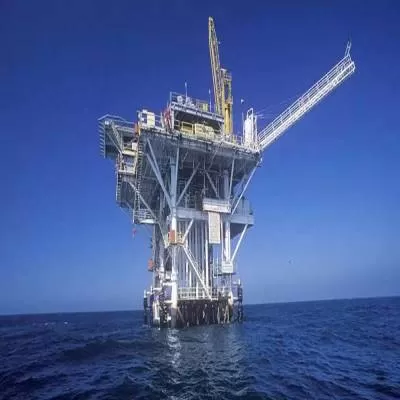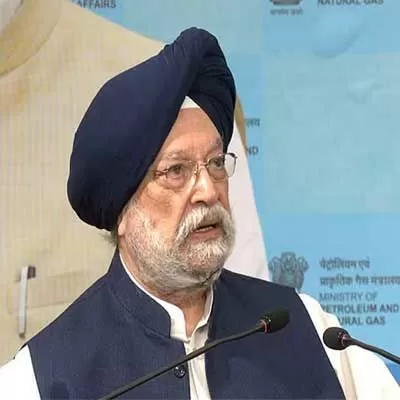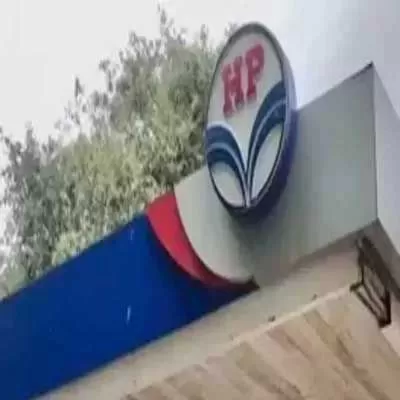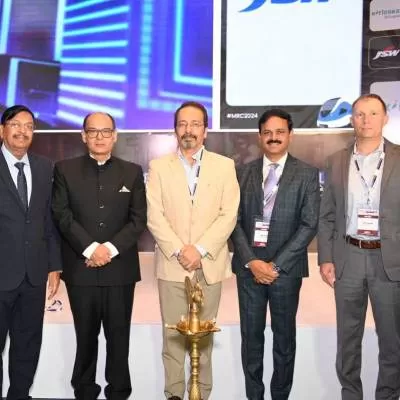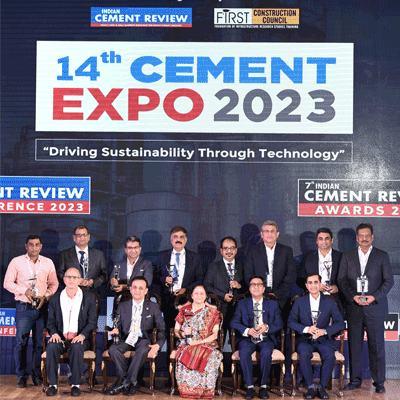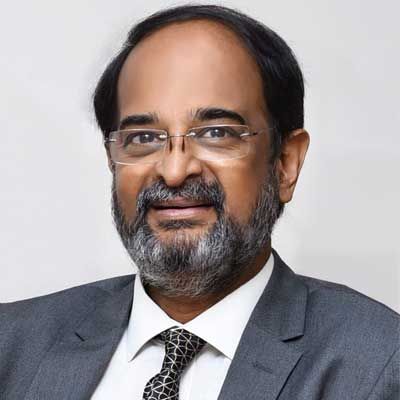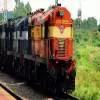- Home
- Infrastructure Energy
- OIL & GAS
- Collapse of Faith
Collapse of Faith
There are lessons to learn from the BALCO chimney collapse, the Kopri bridge collapse and the IOC fire. An outline and implications of these tragedies by LegalPundits International Services Pvt Ltd.
Despite the incredible strides made by the Indian building and infrastructure industry, three recent tragedies have drawn public attention to the issue of quality that has perennially plagued the construction sector in our country.
The BALCO chimney collapse
Wednesday, September 23, 2009
China-based Shandong Electric Power Construction Corporation (SEPCO), the contractor for Bharat Aluminium Company Ltd’s (BALCO) aluminium smelter, won the contract to build the Rs 2,800-crore power plant. SEPCO outsourced the work of the construction of the 257-m chimney to Delhi-based Gannon Dunkerley and Company Ltd (GDCL). The Vedanta-
controlled BALCO had earlier constructed one chimney for its 1,200-mw power plant in the aluminium complex in Korba (Chhattisgarh). The tragedy occurred during the construction of the second chimney for the plant, which collapsed amid heavy rain and lightning. According to Binod Kumar Sriwastav, Chief of Corporate Communications, BALCO, “The construction was going on as per the Memorandum of Understanding (MoU) signed with the state government and the company had all the necessary clearances.†However, Korba’s Mayor Lakhanlal Dewangan told Business Standard, “The company did not take permission from the Korba Municipal Corporation (KMC) for the second chimney and we had served notices for violating norms.†If true, the mayor’s statement could have serious legal ramifications for BALCO, SEPCO, GDCL and other concerned parties.
As the accident took place while the plant was still being built, the accountability factor would rely a great deal on the contractual agreement that the contractor for BALCO would have agreed to. Normally, in such a scenario, laws that would hold a company directly liable would come into effect only after commencement of production. In such cases, the legal principle of vicarious liability comes into play; meaning, the liability an organisation takes on for the actions of those who function on its behalf. Responsibility in such cases is typically fixed on the contractors. However, as in the case of the Delhi Metro bridge collapse, some strictures have been imposed on the contractor, Gammon India, after it was found that the company was negligent in taking precautions. While no contractual agreement, registered or otherwise, can contain a clause that would subrogate any law in force within the Republic of India, such contracts can be drafted to safeguard a company.
In the aftermath, the government suspended the Labour Department’s Deputy Director Rajju Bhoi for dereliction of government duty. Additionally, on November 16, the police arrested BALCO’s Vice-President Viral Mehta, who was also
project manager of the power plant, and two other officials, Associate General Manager Deepak Narang and Trainee Engineer Anup Mahapatra. The state government has already ordered a judicial probe. A senior official of the General Administration Department (GAD) told IANS that a single-member judicial commission comprising District and Sessions Court Judge Sandeep Bakhshi would make a comprehensive investigation based on six points and submit the report to the state government, which has set a three-month deadline for the probe. The judge will also examine, inter alia, whether substandard construction material was used for construction and proper precautions were taken to ensure safety of workers.
The Kopri Bridge Collapse
Friday, October 23, 2009
The mishap occurred during the busy morning hours. A part of the huge Kopri water pipeline and a 142-tonne girder of the under-construction bridge supporting it fell on a train bound for Kalyan, on the outskirts of Mumbai, bringing the traffic on the Central Railways to a halt for several hours. Three people, including the motorman, died and 12 were injured. A case of negligence under Section 304(a) of the Indian Penal Code (IPC) was registered against the contractor, Ajaipal Mangal
& Co, and further investigations are underway. According to Deputy Police Commissioner (Central Railway) Kaiser Khalid, inquiries revealed that a commuter had complained that the bridge was in a shaky condition about three months before the incident. “The police, in turn, passed on the information to the railway administration so appropriate steps could be taken,†he said. The Railway Police is now trying to establish if the accident could have been prevented by taking corrective measures. “If it is found that there was knowledge of the likelihood of such an accident, the Section can be changed from 304(a) to 304 of the IPC, which is ‘culpable homicide not amounting to murder’,†he added.
Police sources have said the bridge was supported by a structure made of wood, which, according to experts, has a tendency to get moist and hollow during the monsoon season. The bridge should have been supported by a RCC structure that would have been able to bear the weight of the bridge. The police are also making inquiries about the material used to construct the bridge and delays in completing the project. Though a case has been registered, no arrests have been made yet. “We are going through all the documents of the contract and are trying to fix responsibility for the mishap,†said Khalid. When questioned, the Central Railway (CR) spokesman Srinivas Mudgerikar said the contract had been awarded by the Thane Municipal Corporation (TMC). CR and TMC have been involved in a blame game from the day after the incident -
conflict resolution at its best!
Following the aftermath of the incident, a portion of the foot over-bridge of Amar Dye-chem Company at Ambivli (built in 1979) was demolished on November 15, 2009 - it had been in a dangerous condition since 1989. Frequent commuters have also pointed out a few other dangerous structures in the area, like another footbridge at Shahad.
The IOC Fire
Thursday, October 29, 2009
The fire broke out at approximately 7:30 pm. According to Indian Oil Corporation’s (IOC) Director (Planning and Business Development) BM Bansal, “About Rs 140-150 crore worth of fuel was stocked at the depot at the time of fire.†He added that the product was covered by insurance from ICICI Lombard. IOC’s (Rajasthan State Office) General Manager Gautam Bose said that when the IOC unit was commissioned in Sitapura, the cost of establishment was about Rs 60-70 crore; building it anew could cost about Rs 300-500 crore.
Preliminary reports stipulate that the fire broke out after a pipeline valve failed when petrol was being transferred from the IOC terminal to Bharat Petroleum’s storage facility nearby. IOC’s Director (Marketing) DC Daga said the fire began with a leak in one of the tankers. This was reiterated by IOC Chairman Sarthak Behuria in a statement to PTI. The Met department recorded a tremor measuring 2.3 on the Richter scale around the time the first explosion took place; such was the impact of the explosions that windows of houses even 3 km away were damaged.
However, these statements seem suspect. In August this year, the Central Bureau of Investigation (CBI) had busted an oil pilferage scam involving the now gutted IOC Sanganer depot (near Jaipur) and arrested two IOC supervisors, which the Jaipur police now believe could have triggered the act of arson or sabotage by those involved to cover their tracks. On August 23, the Jaipur unit of the CBI busted the oil pilferage ring in Sanganer and arrested the manager of the Hindustan Petroleum Corporation Ltd (HPCL) depot, located just a few hundred metres from the IOC depot. CBI spokesperson Atul Gupta said, “The accused had sold fuel to black marketers from the HPCL depot and made up for the shortfall by transferring fuel from the IOC depot, which is the main petroleum hub for the area.â€
Union Petroleum Minister Murli Deora was quick to respond. He ordered an inquiry into the accident by a seven-member committee headed by MB Lal, former Chairman and Managing Director, HPCL. The committee members also include Executive Director of Oil Industry Safety Directorate (OISD) JP Verma and Rajasthan’s Petroleum Secretary Govind Sharma. On November 2, the committee members, accompanied by civil and police authorities, visited the site and surrounding fire-affected areas and collected first-hand information from eyewitnesses about the blaze that had been raging for several days. Lal said the committee would submit its final report with facts, findings and suggestions to the Petroleum Ministry within 60 days.
Lessons to learn
There are urgent lessons to learn from these deplorable tragedies. One hopes they serve as a wakeup call for the Indian construction fraternity. In addition to working out measures to ensure that even the smallest firms follow international safety and construction norms, we should partake in international collaborations, inter alia, to ensure that India remains on the right path to becoming not just a prolific builder, but a safe one.
There are lessons to learn from the BALCO chimney collapse, the Kopri bridge collapse and the IOC fire. An outline and implications of these tragedies by LegalPundits International Services Pvt Ltd. Despite the incredible strides made by the Indian building and infrastructure industry, three recent tragedies have drawn public attention to the issue of quality that has perennially plagued the construction sector in our country. The BALCO chimney collapse Wednesday, September 23, 2009 China-based Shandong Electric Power Construction Corporation (SEPCO), the contractor for Bharat Aluminium Company Ltd’s (BALCO) aluminium smelter, won the contract to build the Rs 2,800-crore power plant. SEPCO outsourced the work of the construction of the 257-m chimney to Delhi-based Gannon Dunkerley and Company Ltd (GDCL). The Vedanta-controlled BALCO had earlier constructed one chimney for its 1,200-mw power plant in the aluminium complex in Korba (Chhattisgarh). The tragedy occurred during the construction of the second chimney for the plant, which collapsed amid heavy rain and lightning. According to Binod Kumar Sriwastav, Chief of Corporate Communications, BALCO, “The construction was going on as per the Memorandum of Understanding (MoU) signed with the state government and the company had all the necessary clearances.†However, Korba’s Mayor Lakhanlal Dewangan told Business Standard, “The company did not take permission from the Korba Municipal Corporation (KMC) for the second chimney and we had served notices for violating norms.†If true, the mayor’s statement could have serious legal ramifications for BALCO, SEPCO, GDCL and other concerned parties. As the accident took place while the plant was still being built, the accountability factor would rely a great deal on the contractual agreement that the contractor for BALCO would have agreed to. Normally, in such a scenario, laws that would hold a company directly liable would come into effect only after commencement of production. In such cases, the legal principle of vicarious liability comes into play; meaning, the liability an organisation takes on for the actions of those who function on its behalf. Responsibility in such cases is typically fixed on the contractors. However, as in the case of the Delhi Metro bridge collapse, some strictures have been imposed on the contractor, Gammon India, after it was found that the company was negligent in taking precautions. While no contractual agreement, registered or otherwise, can contain a clause that would subrogate any law in force within the Republic of India, such contracts can be drafted to safeguard a company. In the aftermath, the government suspended the Labour Department’s Deputy Director Rajju Bhoi for dereliction of government duty. Additionally, on November 16, the police arrested BALCO’s Vice-President Viral Mehta, who was also project manager of the power plant, and two other officials, Associate General Manager Deepak Narang and Trainee Engineer Anup Mahapatra. The state government has already ordered a judicial probe. A senior official of the General Administration Department (GAD) told IANS that a single-member judicial commission comprising District and Sessions Court Judge Sandeep Bakhshi would make a comprehensive investigation based on six points and submit the report to the state government, which has set a three-month deadline for the probe. The judge will also examine, inter alia, whether substandard construction material was used for construction and proper precautions were taken to ensure safety of workers. The Kopri Bridge Collapse Friday, October 23, 2009The mishap occurred during the busy morning hours. A part of the huge Kopri water pipeline and a 142-tonne girder of the under-construction bridge supporting it fell on a train bound for Kalyan, on the outskirts of Mumbai, bringing the traffic on the Central Railways to a halt for several hours. Three people, including the motorman, died and 12 were injured. A case of negligence under Section 304(a) of the Indian Penal Code (IPC) was registered against the contractor, Ajaipal Mangal & Co, and further investigations are underway. According to Deputy Police Commissioner (Central Railway) Kaiser Khalid, inquiries revealed that a commuter had complained that the bridge was in a shaky condition about three months before the incident. “The police, in turn, passed on the information to the railway administration so appropriate steps could be taken,†he said. The Railway Police is now trying to establish if the accident could have been prevented by taking corrective measures. “If it is found that there was knowledge of the likelihood of such an accident, the Section can be changed from 304(a) to 304 of the IPC, which is ‘culpable homicide not amounting to murder’,†he added. Police sources have said the bridge was supported by a structure made of wood, which, according to experts, has a tendency to get moist and hollow during the monsoon season. The bridge should have been supported by a RCC structure that would have been able to bear the weight of the bridge. The police are also making inquiries about the material used to construct the bridge and delays in completing the project. Though a case has been registered, no arrests have been made yet. “We are going through all the documents of the contract and are trying to fix responsibility for the mishap,†said Khalid. When questioned, the Central Railway (CR) spokesman Srinivas Mudgerikar said the contract had been awarded by the Thane Municipal Corporation (TMC). CR and TMC have been involved in a blame game from the day after the incident - conflict resolution at its best! Following the aftermath of the incident, a portion of the foot over-bridge of Amar Dye-chem Company at Ambivli (built in 1979) was demolished on November 15, 2009 - it had been in a dangerous condition since 1989. Frequent commuters have also pointed out a few other dangerous structures in the area, like another footbridge at Shahad. The IOC Fire Thursday, October 29, 2009 The fire broke out at approximately 7:30 pm. According to Indian Oil Corporation’s (IOC) Director (Planning and Business Development) BM Bansal, “About Rs 140-150 crore worth of fuel was stocked at the depot at the time of fire.†He added that the product was covered by insurance from ICICI Lombard. IOC’s (Rajasthan State Office) General Manager Gautam Bose said that when the IOC unit was commissioned in Sitapura, the cost of establishment was about Rs 60-70 crore; building it anew could cost about Rs 300-500 crore. Preliminary reports stipulate that the fire broke out after a pipeline valve failed when petrol was being transferred from the IOC terminal to Bharat Petroleum’s storage facility nearby. IOC’s Director (Marketing) DC Daga said the fire began with a leak in one of the tankers. This was reiterated by IOC Chairman Sarthak Behuria in a statement to PTI. The Met department recorded a tremor measuring 2.3 on the Richter scale around the time the first explosion took place; such was the impact of the explosions that windows of houses even 3 km away were damaged. However, these statements seem suspect. In August this year, the Central Bureau of Investigation (CBI) had busted an oil pilferage scam involving the now gutted IOC Sanganer depot (near Jaipur) and arrested two IOC supervisors, which the Jaipur police now believe could have triggered the act of arson or sabotage by those involved to cover their tracks. On August 23, the Jaipur unit of the CBI busted the oil pilferage ring in Sanganer and arrested the manager of the Hindustan Petroleum Corporation Ltd (HPCL) depot, located just a few hundred metres from the IOC depot. CBI spokesperson Atul Gupta said, “The accused had sold fuel to black marketers from the HPCL depot and made up for the shortfall by transferring fuel from the IOC depot, which is the main petroleum hub for the area.†Union Petroleum Minister Murli Deora was quick to respond. He ordered an inquiry into the accident by a seven-member committee headed by MB Lal, former Chairman and Managing Director, HPCL. The committee members also include Executive Director of Oil Industry Safety Directorate (OISD) JP Verma and Rajasthan’s Petroleum Secretary Govind Sharma. On November 2, the committee members, accompanied by civil and police authorities, visited the site and surrounding fire-affected areas and collected first-hand information from eyewitnesses about the blaze that had been raging for several days. Lal said the committee would submit its final report with facts, findings and suggestions to the Petroleum Ministry within 60 days. Lessons to learnThere are urgent lessons to learn from these deplorable tragedies. One hopes they serve as a wakeup call for the Indian construction fraternity. In addition to working out measures to ensure that even the smallest firms follow international safety and construction norms, we should partake in international collaborations, inter alia, to ensure that India remains on the right path to becoming not just a prolific builder, but a safe one.


